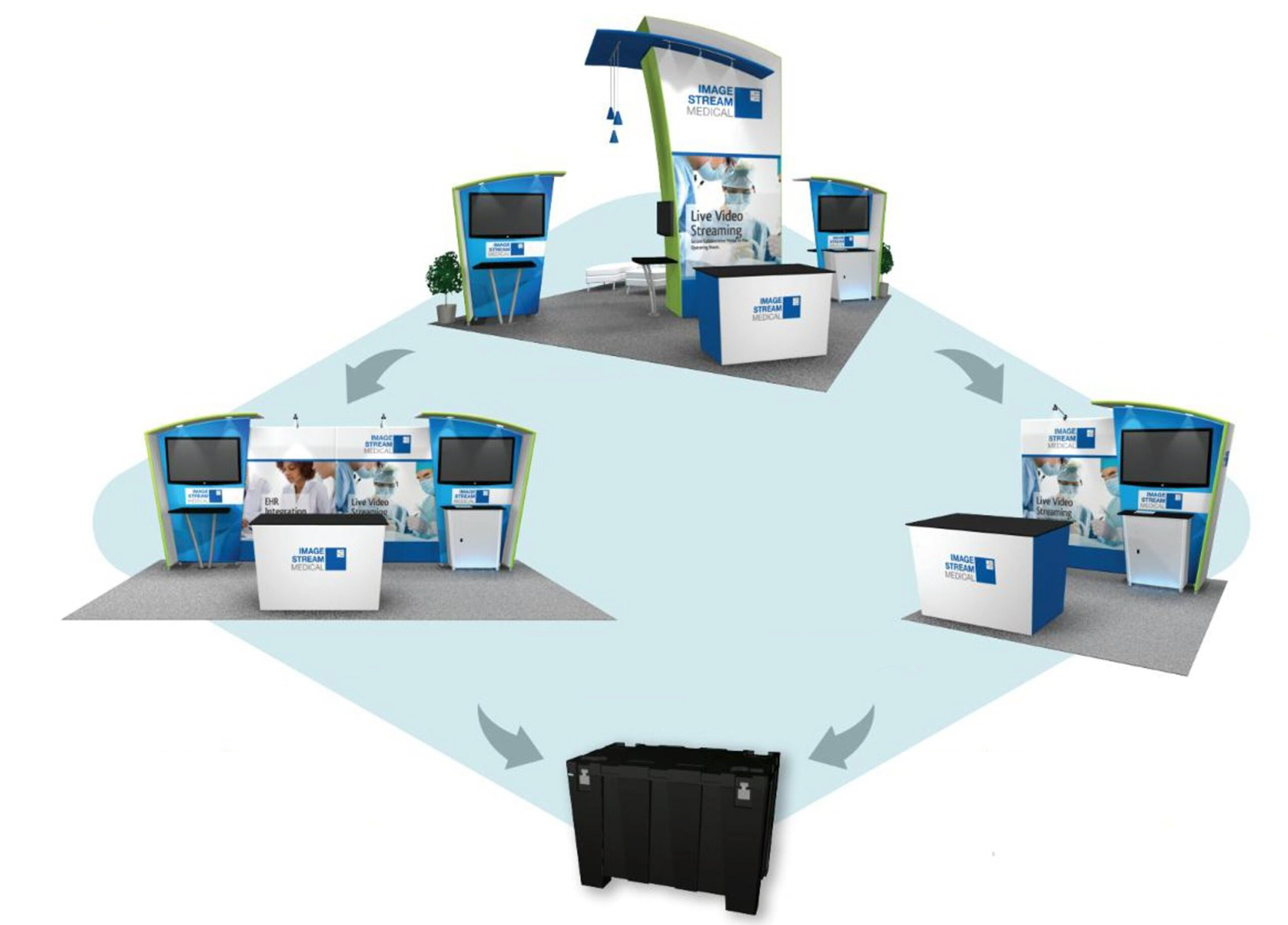Table of Contents
-
Introduction
-
What’s Happening in Event Sustainability
-
An Evolving Conversation: STAR’s Sustainability Journey
-
Choosing the Right Sustainability Partner
-
Why We’re Pursuing the EIC Sustainability Certification
-
How We Help Clients with Sustainability Challenges
-
Sustainability Lifecycle Management Process
-
Sidebar: Oatly’s Sustainable Success at Food and Coffee Shows
-
What’s Next for Sustainability
Introduction
Climate change, sustainability and the environmental impact of brands are hot topics in media headlines and in boardrooms. Today’s consumers want to work with brands that have sustainable operating practices — and that’s impacting how companies do business.
For marketing and event leaders, there’s increasing interest in answering one key question: How do sustainability values carry through to marketing and events strategies?
While marketers and event teams are under pressure to align with sustainability goals, appeal to climate-conscious consumers, and stand out in an industry notorious for waste, finding a roadmap to a sustainable events approach can be challenging.
Building on decades of expertise in designing event spaces and business interiors, STAR works with clients to put sustainable values into action while actively working toward earning the industry’s most rigorous and recognized certification for sustainable events best practices.
Read on to learn more about today’s sustainable events landscape and how STAR is innovating to help clients achieve their objectives, whether they’re embracing an emerging interest or sustainability is a comprehensive brand value.
What’s Happening in Event Sustainability
What’s driving the demand for greater sustainability? It’s important to understand the environmental impact that the events industry drives. Research estimates that the events industry generates 1.2 billion tons of greenhouse gas emissions annually, from factors such as venue energy consumption, food waste and participant transportation. Beyond that, research from the IAEE suggests that booth construction is responsible for the industry’s third most significant environmental impact.
STAR is on a mission to help companies reduce their event-related impact on the environment. Companies that are ready and willing to adopt sustainable practices can dramatically reduce their climate-related impact while capturing other benefits. Research from the Events Industry Council (EIC) suggests that incorporating sustainability into events planning can reduce waste by as much as 60-80% and cut costs up to 20%.
Against this backdrop, it’s clear why organizations that are getting serious about their environmental impact are taking a hard look at their events strategy. Not only can this make a meaningful impact on their organization’s environmental footprint, but a sustainable approach to high-visibility opportunities such as live events and trade shows gives brands the chance to underscore their commitment to sustainability with prospective buyers and the market at large.
Getting events sustainability right drives larger business implications. Recent research discovered that 66% of general consumers and 75% of Millennials consider sustainability when making a purchase. In a similar study, 81% of consumers said they expect to make more environmentally friendly purchases over the next five years. Companies that are serious about sustainability also have an advantage in hiring and retaining top talent. One study found that over 70% of workers and those seeking work prefer environmentally friendly employers.
Increasingly, companies that work with events industry partners are bringing sustainability to the table as a key concern. For some organizations, it’s the beginning of their sustainable events journey. In other cases, it’s a cornerstone of the brand. Across STAR’s client portfolio, sustainability is a growing part of the conversation — and one that the organization is working hard to lead.
An Evolving Conversation: STAR’s Sustainability Journey
STAR’s commitment to helping clients embrace sustainable solutions goes back decades. “In the early 2000s, there was a big movement around green materials. In our materials library here in the office, we created a green materials section. It was a hot topic, but when we highlighted that it was two or three times the cost, the discussion stopped. Today, it’s very different,” says Justin Dworak, President at STAR.
Today, STAR’s customers highlight sustainability as a core concern. We have a social responsibility to do it, and there’s definitely more of a client demand. The topic is one of the top initiatives for many of our clients, says Dworak. The evolution of the industry, including the emergence of new materials, partner organizations and industry standards, is making it both creatively and financially feasible to invest in sustainable events strategies.
For the STAR team, sustainability is integrated across the organization. In fact, STAR owner and CEO Mark Johnson made sustainability one of the key tenets of the business when he founded it over 30 years ago.
From the start we stated that STAR will be kind to the environment in our work as one of our founding principles, and we worked diligently to reuse, recycle, and renew in everything we did.
Mark Johnson, STAR CEO
It begins in design with creative decisions, and then cascades to affect materials selection and reuse, decisions about when to employ rental inventory, partnering with a holistic ecosystem of environmentally innovative partners, and developing strategic reuse and recycling plans. Whether the goal is helping build a single setup for one trade show or managing an annual event calendar, there’s strategic collaboration that builds sustainability into the plan at all levels of the organization.
Choosing the Right Sustainability Partner
For brands focused on introducing sustainable practices into their events strategies, finding a vetted and knowledgeable partner to help bring that vision to life can be a challenge.
“If sustainability is really important to you, look deeper at the companies that you’re working with to see what they’re doing behind the scenes to make this work. It’s easy to do greenwashing, especially in this space — in this exhibit space, where there’s a lot of talk but not as much movement,” says Dane Giles, Director of Creative at STAR. “You’ve got to look at the totality of the effort, and that’s how you decide if the company is really engaged with this type of activity.”
In many ways, sustainability is a broad topic that’s rapidly evolving. In the events space, taking a sustainable approach to solving a specific problem — such as changing materials for greater recyclability or choosing an alternate design — requires innovation and expertise.
In an environment where customers and brands are increasingly aware of climate change and eco-consciousness, there’s little patience for brands that don’t walk their talk. Greenwashing, the practice of conveying misleading claims to lead customers to think a solution is sustainable, is all too common, making it crucial to vet prospective partners. Within STAR, sustainability is of strategic importance and drives decisions about working with customers at all levels. Bringing sustainability into the events industry is an evolving conversation and one that requires constant education, exploration and refinement. “We have clients with different levels of interest in how they want to achieve sustainability in this venue. I have a client where it’s one of their major tenets as a company. They look for, on all fronts, ‘How can we be as sustainable as possible?’ Sometimes that leads us down some paths that don’t actually work, but they’re willing to do some exploration around that,” says Terri Licopoli, Director of Account Management at STAR.
Over time, the willingness to learn and develop new solutions allows STAR to create solutions that clients can’t find elsewhere, and then to codify them into best practices. “An important thing about sustainability is coming up with what you want to do, measuring how it works or didn’t, and then acknowledging whether or not it worked. And you go forward if it did. If it didn’t, that’s fine, you try something different,” says Licopoli.
Why We’re Pursuing EIC Sustainability Certification
In order to demonstrate that sustainability is more than a buzzword, STAR is investing in going through the industry’s leading best practices program, which is vetted through a demanding third-party audit system. The EIC Foundations Certification program uses their Sustainable Events Standards (SES) and stands as the leading sustainability certification program for the events industry.
“The EIC Sustainable Events Standards were created by the events industry, for the event industry. Over 300 individuals, over 20 industry associations from over 20 countries, contributed to the development of the standards. The result is a targeted program that addresses the sustainability challenges and opportunities of the event industry,” says Richard Murphy, President of the Alliance for Audited Media and a third-party auditor who evaluates firms completing the certification.
Navigating the process of meeting sustainability goals in an effective way — and choosing a pathway that makes a meaningful impact — can be challenging. The EIC certification offers participants a deep dive into the latest thinking on these critical issues and a structured pathway towards sustainability. By engaging a third-party firm to ensure certification candidates are meeting their objectives, it provides a clear indication that companies are making the sustainability efforts they claim and that no greenwashing is happening.
“The program benefits our company, our customers, and the industry. For STAR, the program provides a framework and roadmap to becoming a more sustainable organization. For our customers, we can provide independent assurance that they are working with a company committed to becoming more sustainable,” says Dworak.
The certification encompasses a comprehensive review of sustainability practices across various areas of the business. The standards provide sustainability best practices across the entire organization, including organizational management, marketing and communications, climate action, water management, materials and circularity, supply chain management, and DEI (diversity, equity and inclusion). “The message is clear: It’s all important,” notes Murphy. Third-party auditing helps ensure that organizations are walking their talk with regard to meeting these high standards. Murphy emphasizes the value of impartial assessment in validating sustainability efforts.
We find companies in the EIC SES program appreciate the third-party review because it focuses the team, validates their efforts and recognizes their achievements.
Richard Murphy, President Alliance for Audited Media
The EIC’s leadership in sustainability has catalyzed a paradigm shift within the events industry. Murphy reflects on the transformative impact, stating, “Historically, the event industry has been seen as a non-sustainable industry, but through the work of the EIC, that view is changing quickly.”
And for organizations that invest in going forward with the organizational-level certification and educating their team members on the individual-level certifications, the value is clear.
Through rigorous standards, independent validation and visionary leadership, the program not only benefits participating companies and their clients but also fosters a culture of environmental responsibility that resonates across the industry. As the industry continues to evolve, initiatives like the EIC SES Certification will play a pivotal role in helping STAR shape effective sustainable events for clients.
How We Help Clients with Sustainability Challenges
With sustainability best practices driving client efforts from design to materials sourcing to manufacturing practices, it’s in the DNA of how STAR approaches everything. To put STAR’s sustainable philosophies in action, some of the best practices being implemented on behalf of clients include:
1. Creative concepting introduces sustainable designs: Building sustainable events strategies begins with creative concepts and design. Creative strategy involves asking the right questions to understand what clients want to achieve, and taking a deeper dive into sustainable approaches to accomplish those goals. By engaging early and with sustainability in mind, it’s possible to co-create effective, environmentally friendly event strategies.
2. Digital signage increases flexibility and eliminates waste: Digital displays help eliminate waste by enabling clients to change their messaging without having to print, ship, and recycle materials. However, purchasing and maintaining digital screen inventories, touch screens, and other devices can be complex and costly. By connecting clients with rental inventory that’s sourced close to event locations, it eliminates waste and provides real-time creative flexibility.
3. Sustainable sourcing reduces waste: Whether it’s selecting a more sustainable flooring alternative or sourcing second-hand furniture to responsibly bring just the right flare to a booth design, STAR’s team goes the extra mile in sourcing. With a goal to reduce waste, choose options that can be recycled or reused. And get creative by partnering with innovative companies, it’s possible to source sustainable options for a range of use cases.
4. Reuse through modular design: By working with customers from the concepting phase and beyond, STAR designs pieces that can be repurposed across multiple shows. For example, a booth surround can be built once and then stained or painted to seamlessly integrate into a wide variety of different designs across a company’s live event schedule.
5. Sustainable manufacturing processes transform the footprint: STAR is constantly working to improve and streamline the manufacturing process for sustainability. One example that’s being rolled out soon is moving from purchasing paints to using a paint mixing system that will allow the team to custom mix batches of paint in the exact amounts needed. Similar efficiencies and greater sustainability are being captured throughout the manufacturing lifecycle.
6. Rental inventory drives reuse: For companies interested in reuse, Featherlite Exhibits is a STAR company that provides extensive rental inventory. Not only does that offer clients increased flexibility in their designs; but it enables them to meet the needs of individual shows in a cost effective, sustainable way.
7. Recycling and donation management: In cases where items can’t be reused, the team at STAR works with a network of qualified partners to donate those items and give gently used items new life. Furniture or household items are donated through Bridging, an organization that helps families in need. Partners like EcoSet offer strategies for donating more complex items. Any food and beverages left over at the end of events is given to local food pantries or similar organizations like Second Harvest Heartland.
8. Innovative solutions to challenging problems: Sustainability in the events industry is an evolving topic, and innovation is often required. STAR prides itself on finding partners to help address challenging problems when they arrive. For example, throughout the manufacturing process there are leftover components like sawdust or fabric cutoffs. By finding the right companies to partner with, the team is working to reduce waste and give those items new life.
9. Regional expansion for logistics, cost, and carbon footprint: STAR has strategically expanded the business to have regional offices and hubs in major markets around the US, including Minneapolis, Las Vegas, DC, and Durham. With a footprint in these markets, it’s possible to reduce freight, shipping, and emissions. Not only is this a sustainability win, but it comes
with an additional cost savings to clients.
10. Investing in staff education: As highlighted above, STAR is currently pursuing the multi-year EIC sustainability certification program. As part of this initiative, individual staff members are going through in-depth curriculum to obtain their
professional certifications to drive sustainability leadership across the organization. An expanded knowledge base also offers greater consultative support to clients on everything from creative strategy to operational management.
Sustainability Lifecycle Management Drives Greatest Impact
Individually, any one of these strategies is an important improvement. However, STAR’s experience has shown that it’s the deeper integration of sustainability best practices across the organization – and at all layers of the project lifecycle – that makes the most profound difference.
“There’s a whole ecosystem around sustainability. People latch onto big obvious ideas like solar and wind and recycling. But it’s just so many little process changes that all add up to real impact,” says Giles.
Comprehensive relationships allow end-to-end management with sustainability as a core value throughout projects. This translates into sustainability lifecycle management – a unique, but critical offering within the events industry.
We’re looking less at just the one-time project and instead asking, what’s the life of this thing that we are designing and constructing? It’s life cycle management. It’s causing us to have a much deeper discussion around the purpose of what we are creating.
Justin Dworak, STAR President
To this end, STAR offers multi-layered, sophisticated sustainability lifecycle management from concepting to design to manufacturing to deployment to recycling and disposal management. And as each aspect of the business is shaped through the lens of sustainability best practices, there’s a constantly evolving effort to improve performance across the project lifecycle.
Sidebar: Oatly’s Sustainable Success at Food and Coffee Shows
Oatly, a trailblazer in plant-based products, sought to make a splash at food and coffee shows while staying true to its sustainability values. Strategically partnering with STAR, Oatly embarked on a journey to create impactful trade show exhibits that resonated with attendees and put their sustainability practices into play as part of their broader events initiatives.
Together, we meticulously planned each trade show appearance, focusing on effectively conveying Oatly’s brand message and values. At the concept and creative stage, Oatly’s strategic design embraced modularity, allowing for flexible use of assets across different show formats. This approach minimizes waste and maximizes re-usability. For example, surrounds were designed and reused in different concepts by painting them white or staining the wood blonde or dark, depending on the concept. Specific concepts are supplemented with booth rental inventory, bringing reuse to the forefront.
Incorporating sustainable materials and practices was central to manufacturing Oatly’s trade show presence. Eliminating flooring waste was one key consideration. OCTAeco flooring was selected as an alternative to traditional carpet padding. Sustainably constructed and reusable with a lifespan of at least 10 years, OCTAeco is constructed of 100% recycled material and completely breaks down to water and CO2 upon incineration.
Oatly and STAR implemented reusability initiatives, sourcing furniture from local secondhand stores and re-donating it after use. Additionally, materials like Falconboard were utilized for signage, ensuring recyclability. Food leftover from shows was donated to local businesses, emphasizing a commitment to minimizing waste at every stage.
Oatly exemplifies the power of collaboration in successfully driving sustainability at events. By integrating eco-friendly practices, innovative design and engaging experiences, Oatly cemented its position as a leader in the plant-based industry while inspiring others to embrace sustainability in their event strategies.
What’s Next for Sustainability
When discussing sustainability and the events industry, actions speak louder than words. As we navigate the complex landscape of environmental responsibility for trade shows and other live events, STAR is committed to innovation and supporting ongoing client needs.
Sustainability is not just a trend, but a fundamental shift in how the events industry approaches business. From reducing greenhouse gas emissions to minimizing waste, every decision we make at STAR is guided by a steadfast dedication to leaving a positive impact on the planet while delivering top-tier results for clients.
Our partnership with clients isn’t just about providing services; it’s about co-creating a future where sustainability is not an afterthought, but a core value embedded in every aspect of their events. Together, we’re not just following best practices; we’re setting new standards for excellence in sustainability.
By choosing STAR as your sustainability partner, you’re laying the foundation for transformation. You don’t have to navigate your sustainability journey alone. STAR is here to guide you every step of the way. Get in touch today to discuss your unique needs with our sustainable events experts.
Deeper dive.
Discover our library of expert insights, best practices, and experiential marketing tips and tricks to keep you in the know and ahead of the crowd.
InsightsSustainability in Action
The Strategic Edge
The Power of Creative Strategy
Let’s connect.
We are here to transform every space into an amazing story. Call, email, or chat with us anytime to learn more.
Email us
Call
"*" indicates required fields







